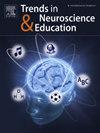Learning with erroneous visualizations modulates retention depending on perceptual richness and test type
IF 3.4
Q2 NEUROSCIENCES
引用次数: 0
Abstract
Background
Learners are increasingly subjected to inaccurate visualizations generated using artificial intelligence. Coincidentally, some learning strategies purposely let learners engage with erroneous content. Instructional visualizations can be created in varying levels of perceptual richness (or realism). We conducted the present experiment to assess whether testing using erroneous examples can be a viable strategy for learning tasks depending on their perceptual richness.
Methods
The two factors of testing (with an error-spotting task vs. without) and realism (schematic vs. realistic) were assessed using two retention tests.
Results
Testing with erroneous examples was detrimental when combined with schematic visualizations, but helpful when applied to realistic imagery in one of the tests.
Conclusion
Studying with erroneous examples appears to require a certain level of realism to be an effective method. Exposing learners to inaccurate visualizations such as those generated by artificial intelligence tools may not be problematic as long as this fact is disclosed.
错误的视觉化学习根据感知丰富性和测试类型调节记忆
学习者越来越多地受到使用人工智能生成的不准确可视化的影响。巧合的是,一些学习策略故意让学习者接触错误的内容。教学可视化可以在不同程度的感知丰富性(或现实主义)中创建。我们进行了本实验,以评估使用错误示例的测试是否可以作为学习任务的可行策略,这取决于它们的感知丰富性。方法采用两种记忆保留测试,评估测试(有错误发现任务与没有错误发现任务)和现实主义(图式与现实)两个因素。结果错误示例的测试在与图解可视化相结合时是有害的,但在其中一个测试中应用于真实图像时是有益的。结论用错误例题进行研究需要一定的现实主义意识,这是一种有效的方法。让学习者接触人工智能工具生成的不准确的可视化可能没有问题,只要这一事实被披露。
本文章由计算机程序翻译,如有差异,请以英文原文为准。
求助全文
约1分钟内获得全文
求助全文
来源期刊

Trends in Neuroscience and Education
NEUROSCIENCES-
CiteScore
6.30
自引率
6.10%
发文量
22
审稿时长
65 days
 求助内容:
求助内容: 应助结果提醒方式:
应助结果提醒方式:


